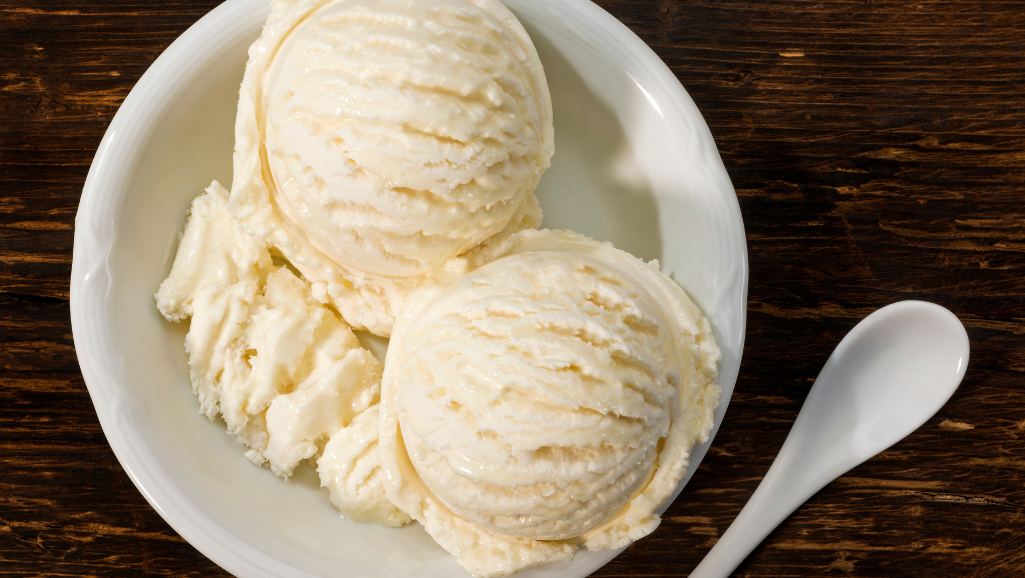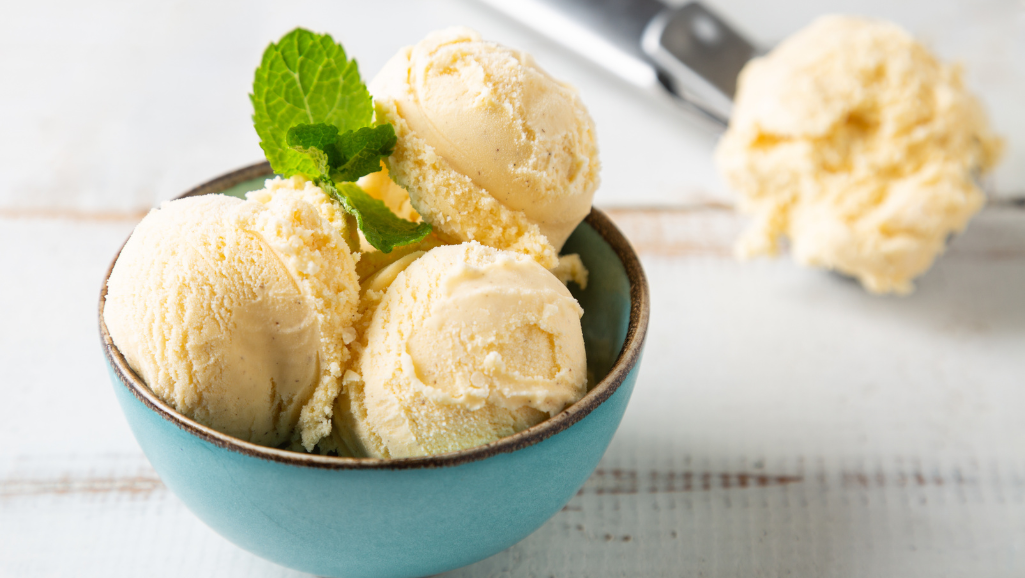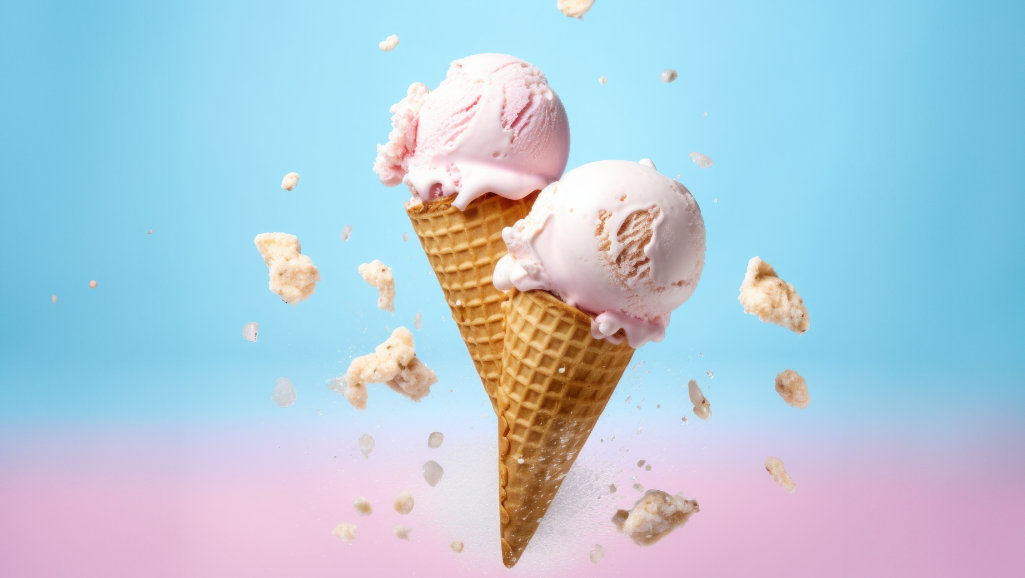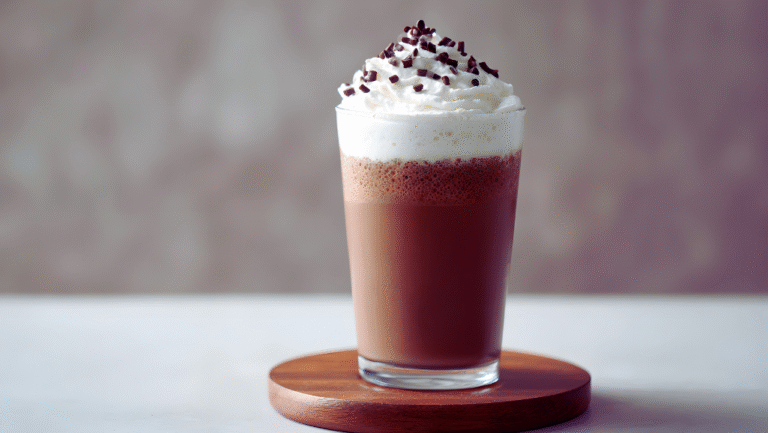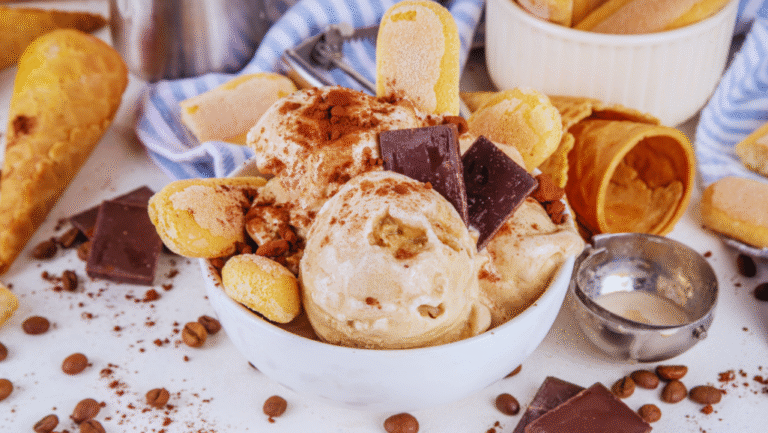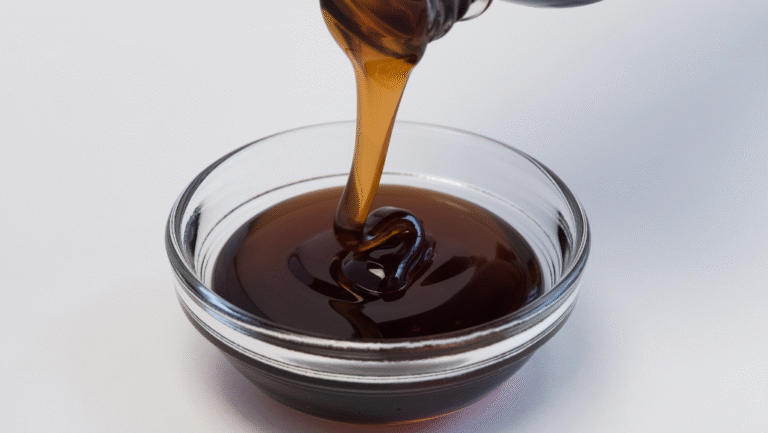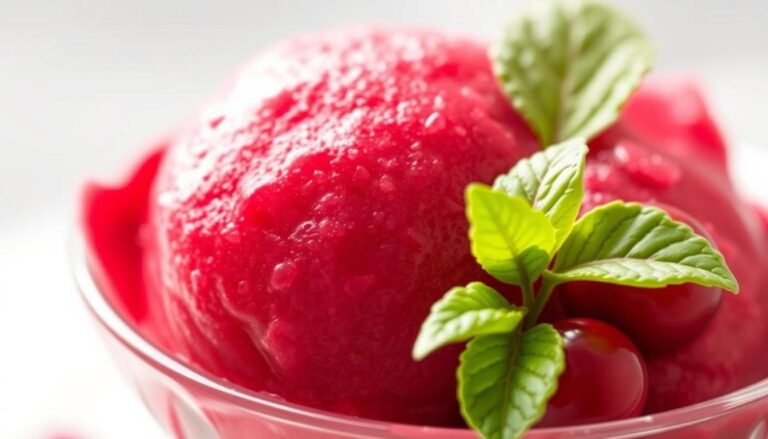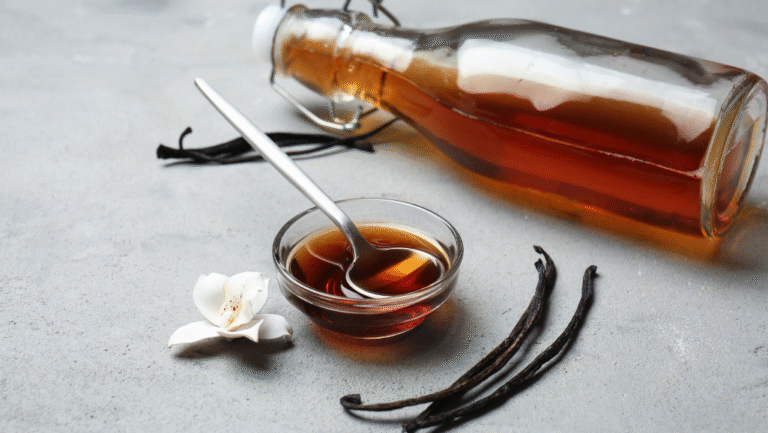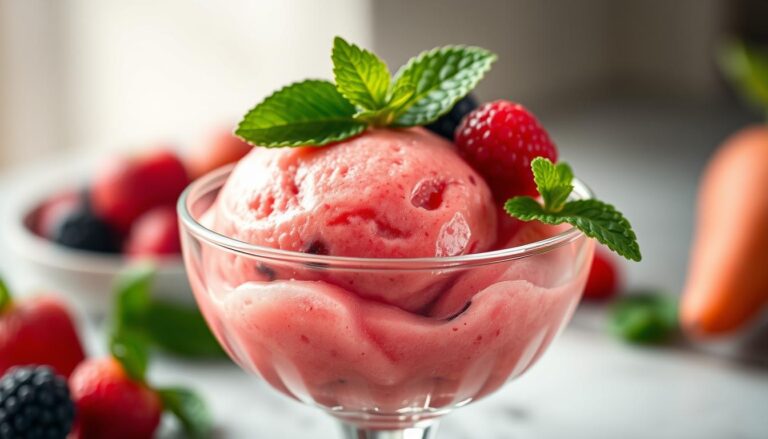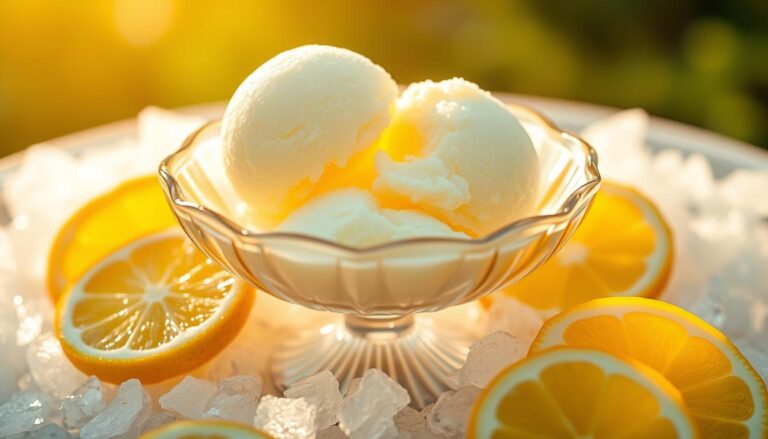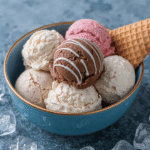Ice cream is a frozen dairy dessert loved by people worldwide for centuries. It’s made from milk, cream, sugar, and flavorings. This mix creates a smooth, creamy texture that’s a joy to eat.
The FDA sets strict rules for ice cream. It must have at least 10% milkfat and weigh 4.5 pounds per gallon. The churning process can’t add more than 100% air. These rules help ensure ice cream is of high quality.
Ice cream’s history is long and fascinating. It started in ancient Persia, Rome, and Japan. The first mention in the New World was in 1744. It quickly became a favorite of George Washington. Thanks to new technology, ice cream became easier to make and more available.
Today, ice cream makers use simple ingredients to create many flavors. From vanilla and chocolate to salted caramel and matcha, they love to be creative. Ice cream is also great in milkshakes, sundaes, and sandwiches.
Key Takeaways
- definition for ice cream is a frozen dairy dessert made from milk, cream, sugar, and flavorings.
- Genuine ice cream must contain at least 10% milkfat and weigh 4.5 pounds per gallon.
- Overrun, the amount of air incorporated during churning, should not exceed 100%.
- Ice cream history dates back to ancient times, with early versions enjoyed in various cultures.
- Mass production and technological advancements have made ice cream more widely accessible.
Classic Vanilla Ice Cream
4
servings30
minutes40
minutes300
kcal1
hour10
minutesSimple and creamy homemade vanilla ice cream.
Keep the screen of your device on
Ingredients
2 cups 2 heavy cream
1 cup 1 whole milk
3/4 cup 3/4 granulated sugar
1 tablespoon 1 pure vanilla extract
1/8 teaspoon 1/8 salt
Directions
- In a medium bowl, combine the heavy cream, whole milk, granulated sugar, vanilla extract, and salt; whisk until sugar is dissolved.
- Cover the bowl with plastic wrap and refrigerate for at least 1 to 2 hours, or overnight, for the flavors to meld.
- Once the mixture is thoroughly chilled, pour it into an ice cream maker and churn according to the manufacturer's instructions, usually about 20 to 25 minutes.
- Transfer the churned ice cream to an airtight container and freeze for at least 4 hours to firm up before serving.
- For best results, store the ice cream in the coldest part of the freezer in a shallow, airtight container to prevent ice crystals.
Nutrition Facts
- Serving Size: 0g
- Total number of serves: 8
- Calories: 250kcal
- Fat: 18g
- Saturated Fat: 11g
- Trans Fat: 0.5g
- Polyunsaturated Fat: 0.5g
- Monounsaturated Fat: 5g
- Cholesterol: 70mg
- Sodium: 60mg
- Potassium: 130mg
- Carbohydrates: 20g
- Fiber: 0g
- Sugar: 20g
- Protein: 3g
- Vitamin A: 15IU
- Vitamin C: 1mg
- Calcium: 10mg
- Iron: 0mg
- Vitamin D: 0mg
- Vitamin E: 0mg
- Vitamin K: 0mg
- Thiamin: 0mg
- Riboflavin: 0mg
- Niacin: 0mg
- Vitamin B6: 0mg
- Vitamin B12: 0mg
- Folate: 0mg
- Biotin: 0mg
- Pantothenic Acid: 0mg
- Phosphorus: 0mg
- Iodine: 0mg
- Magnesium: 0mg
- Zinc: 0mg
- Selenium: 0mg
- Copper: 0mg
- Manganese: 0mg
- Chromium: 0mg
- Molybdenum: 0mg
- Chloride: 0mg
Did you make this recipe?
Tag @https://www.instagram.com/ice_cream_haven/ on Instagram and hashtag it with #IceCreamIceCreamHavens
Like this recipe?
Follow @https://www.pinterest.com/Ice_Cream_Haven/ on Pinterest
Join our Facebook Group!
Follow https://www.facebook.com/icecreamhavens/ on Facebook
How is Ice Cream Made?
Making ice cream involves several key steps. These steps turn a mix of ingredients into the frozen treat we love. We’ll explore the important parts of churning and freezing.
What is Ice Cream?
Ice cream is a favorite treat worldwide for centuries. It’s made from milk, cream, sugar, and flavorings. This mix creates a sweet, creamy dessert with many flavors and textures.
Historical Overview
Ice cream’s history goes back to ancient times. Early versions were enjoyed in Persia, Rome, and Japan. They used snow or ice mixed with fruit or sweeteners.
Over time, the recipe changed. It added milk and cream for a richer taste. The ice cream maker’s invention in the 19th century made it easier to make smooth ice cream.
Basic Ingredients
The base of ice cream is milk or cream. Sugar adds sweetness and softens the texture. Flavorings like vanilla or chocolate make each ice cream unique.
Different ingredient ratios create different ice cream styles. Premium ice creams have more milk fat, between 10% and 16%.
Now, there’s a growing demand for dairy-free ice cream. These alternatives use plant-based milks for a creamy texture, appealing to those with lactose intolerance or vegans.
Types of Ice Cream
There are many ice cream types, each with its own features:
- Gelato: Known for its dense, creamy texture and strong flavors. It has less air and is served warmer than traditional ice cream.
- Frozen Custard: Made with milk, cream, sugar, and egg yolks. It’s rich, smooth, and has a slightly eggy taste.
- Soft Serve: Served straight from the machine, it’s softer and lighter. Introduced in 1939, it’s a favorite today.
“Ice cream is a sweet frozen food made from a mixture of milk, cream, sugar, and flavorings.”
Ice cream comes in classic flavors like vanilla and chocolate, and new ones like lavender honey. The world of ice cream is always changing, bringing new flavors and varieties to enjoy.
The Process of Churning
Churning is a key step in making ice cream. It adds air to the mix and stops ice crystals from forming. This makes ice cream smooth and creamy.
During churning, the mix is moved in an ice cream maker. This machine freezes and adds air to the mix.
The amount of air added is called overrun. Ice cream can have up to 50% air. But premium ice creams have less, around 80%, making them denser.
Freezing Techniques
After churning, the mix is frozen to solidify it. Different freezing methods are used, each giving the ice cream its unique taste and texture.
Blast freezing is one method. It freezes the mix quickly, at -40°F (-40°C. This makes the ice cream smooth.
Slow churning is used for gelato. It makes the ice cream denser and less airy. This is because it’s churned slowly at a slightly warmer temperature.
Soft serve ice cream is made differently. It’s frozen until about 50% of the water is frozen. This makes it creamy and easy to dispense.
Nutritional Aspects of Ice Cream
Understanding ice cream nutrition is important. It helps you know the calories and ingredients in this tasty treat. Knowing this can help you make better choices.
Caloric Content
Ice cream is high in calories, mainly because of sugar and fat. A 100g serving of vanilla ice cream has about 207 calories. It also has 11g of fat, 23g of carbs, and 3.5g of protein.
Lower-fat ice creams have fewer calories, around 150-180 per 100g. Gelato, being Italian-style, has less fat and calories, about 190 per 100g.
Common Nutritional Ingredients
Ice cream’s ingredients give it its texture, taste, and nutritional value. Here are some common ones:
- Milk and cream: These are the base, making it creamy and rich. The fat in milk makes it more indulgent.
- Sweeteners: Sugar, like sucrose or corn syrup, adds sweetness. It also makes the ice cream softer.
- Stabilizers and emulsifiers: Ingredients like guar gum keep it smooth. They prevent ice crystals and mix the fat evenly.
- Flavorings: Vanilla, cocoa, fruits, nuts, and chocolate add flavor. They make the ice cream taste better.
Ice cream is a good source of calcium, phosphorous, and minerals. It also has lactose and protein.
Even though ice cream has some good nutrients, it’s mostly a treat. It’s high in sugar and fat. Eating it in moderation is best for a balanced diet.
Popular Flavors of Ice Cream
Ice cream flavors have changed over time. Classic favorites like vanilla, chocolate, and strawberry are always in demand. But new tastes like lavender honey or goat cheese and fig are also gaining fans.
Classic Flavors
Vanilla is the most loved ice cream flavor worldwide. It’s been a favorite for centuries because of its creamy texture and taste. Chocolate, the first flavor made in Europe, is a close second in the US.
Strawberry is another top choice, loved for its sweet taste. Other favorites include mint chocolate chip and butter pecan. Neapolitan ice cream, with its mix of vanilla, chocolate, and strawberry, is also a long-time favorite.
Innovative Flavors
Today, ice cream makers are trying new things. Baskin-Robbins® has introduced over 1,000 flavors. They range from bacon and beer ice cream to rose and lavender flavors.
Regional flavors are also getting more attention. For example, lucuma ice cream from Peru is known for its nutty taste. Moon mist ice cream in Atlantic Canada and ube ice cream in the Philippines are also unique. The world of ice cream is always changing, thanks to the creativity of makers and the adventurous tastes of consumers.
Variations of Ice Cream
Ice cream is a favorite frozen treat with many variations. Each has its own special taste and appeal. From the creamy gelato to dairy-free options, there’s something for everyone.
Gelato: The Italian Delicacy
Gelato, the Italian ice cream, is loved by many. It’s denser and more flavorful than regular ice cream. Made with whole milk, it has less milkfat.
Gelato is churned slowly for a smooth texture. It’s made without eggs or stabilizers, letting the flavors shine. This makes gelato a lighter yet satisfying choice.
Dairy-Free Delights
For those who are vegan or lactose intolerant, there are many dairy-free ice creams. These non-dairy ice creams use plant-based milks like coconut or almond. They offer creamy indulgence without animal products.
“Vegan ice cream has come a long way in recent years, with brands like Ben & Jerry’s and Häagen-Dazs. They offer impressive dairy-free flavors that rival their traditional ones.”
Lactose-free ice cream is great for those who can’t digest lactose. It’s made with lactose-free milk or dairy alternatives. This way, everyone can enjoy ice cream without discomfort.
Whether you prefer gelato’s smoothness or dairy-free ice cream’s lightness, there’s something for everyone. Explore the wide range of ice cream variations. Your taste buds will love it!
Cultural Significance of Ice Cream
Ice cream is loved worldwide, with each culture having its own twist. Italy has gelato, while Japan enjoys mochi ice cream. In the United States, people eat an average of 23 gallons of ice cream each year.
Ice Cream Around the World
Ice cream’s history goes back to ancient times, with frozen treats enjoyed as far back as 4000 B.C. Augustus Jackson, known as the “father of ice cream,” introduced the modern method. This involved adding salt to control the temperature.
As ice cream spread, different places created their own flavors and styles. This made ice cream a global favorite.
Ice Cream in Celebrations
In the United States, ice cream is a big part of celebrations. It’s a favorite at birthdays and weddings. After World War II, ice cream became even more popular.
In 1946, Americans ate over 20 quarts of ice cream per person. This showed how much they loved it.
Today, ice cream culture keeps growing. There are now specialty stores and restaurants with new flavors. From classic vanilla to moose tracks and green tea, there’s something for everyone.
The Future of Ice Cream
The ice cream world is changing fast, with new trends and green practices leading the way. The global ice cream and frozen dessert market is seeing more small-batch and artisanal ice cream. This is because people want unique and top-notch flavors.
Trends in Ice Cream Production
Artisanal ice cream is becoming very popular. It focuses on using natural ingredients and trying out new flavors. You might find ice cream with matcha, lavender, or even bacon and olive oil.
There’s also a big push for organic and plant-based ice creams. This is because more people are watching what they eat and want options that fit their diets. Organic ice cream is made with milk from cows that eat lots of grass and ingredients grown without harmful chemicals.
Sustainable Practices in the Industry
The ice cream world is getting greener. Companies are using eco-friendly packaging to cut down on waste. They’re also choosing local and organic ingredients to help the planet and support local farmers.
Some ice cream makers are working directly with farmers. This ensures their ingredients are not only good but also sustainable. By doing this, the ice cream industry is meeting consumer needs and helping the environment.
The future of ice cream is bright and full of possibilities. With homemade ice cream traditions and new, green ways of making it, there’s something for everyone. Ice cream lovers can look forward to trying all sorts of new and exciting flavors.


